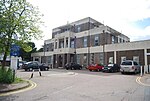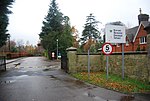Tunbridge Wells Grammar School for Boys

Tunbridge Wells Grammar School for Boys (TWGSB) is a grammar school in Royal Tunbridge Wells, Kent, England. Founded as a technical school in 1956, TWGSB became a grammar school in 1982.The current enrolment of 1,504 pupils (of which 326 are in the sixth form) is spread across two sites: the main site in Tunbridge Wells and the annexe in Sevenoaks. The lower school is all boys (aged 11–16 years) whilst the sixth form is mixed (aged 16–18 years). Admission to the lower school is selective with pupils required to pass the eleven-plus selection test administered by Kent County Council. Successful pupils fall within the top 25 per cent of the ability range upon entrance.The current Headteacher, Amanda Simpson, was appointed in September 2017. Preceded by Simon Marsh (Acting Headteacher, January 2017 - August 2017), John Harrison (September 2006 - December 2016), and Derek Barnard (September 1988 - August 2006).
Excerpt from the Wikipedia article Tunbridge Wells Grammar School for Boys (License: CC BY-SA 3.0, Authors, Images).Tunbridge Wells Grammar School for Boys
Floyd Close, Tunbridge Wells High Brooms
Geographical coordinates (GPS) Address Nearby Places Show on map
Geographical coordinates (GPS)
| Latitude | Longitude |
|---|---|
| N 51.15 ° | E 0.26 ° |
Address
Floyd Close
TN4 9US Tunbridge Wells, High Brooms
England, United Kingdom
Open on Google Maps






